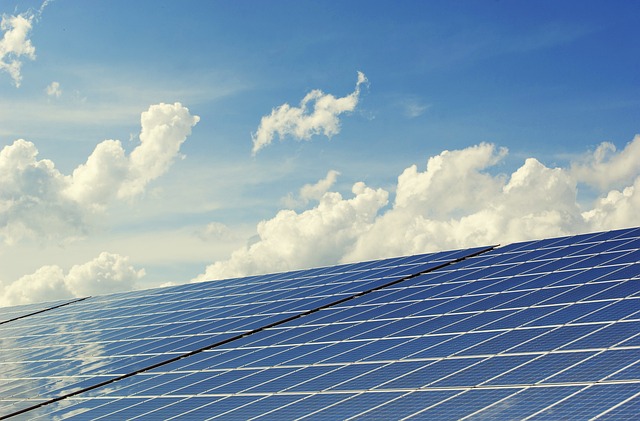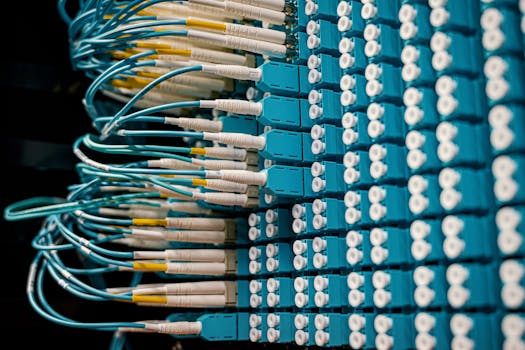“Empower Your Space: Master the Art of Wiring a Solar-Powered Fan System!”
Wiring a solar-powered fan system involves several key steps to ensure efficient operation and safety. This guide will outline the essential components needed, including solar panels, a charge controller, batteries, and the fan itself. Understanding the basic principles of solar energy and electrical wiring is crucial for a successful installation. By following the proper procedures, you can create a sustainable and energy-efficient cooling solution for your space.
Tools Needed for Wiring a Solar-Powered Fan System
Wiring a solar-powered fan system can be a rewarding project that not only enhances your comfort but also promotes sustainability. To embark on this endeavor, it is essential to gather the right tools, as they will facilitate a smooth installation process and ensure that your system operates efficiently. First and foremost, a multimeter is a crucial tool for this project. This device allows you to measure voltage, current, and resistance, helping you troubleshoot any issues that may arise during the installation. By using a multimeter, you can confirm that your solar panels are generating the expected voltage and that all connections are secure.
In addition to a multimeter, wire strippers are indispensable for preparing your electrical connections. These tools enable you to remove the insulation from the ends of the wires without damaging the copper strands inside. Properly stripped wires are essential for creating solid connections, which in turn ensures optimal performance of your solar-powered fan system. Alongside wire strippers, a pair of pliers will also come in handy. Pliers can be used to bend wires, tighten connections, and manipulate components in tight spaces, making them a versatile addition to your toolkit.
Moreover, a screwdriver set is necessary for securing various components of the system. Depending on the specific fan and solar panel you choose, you may encounter different types of screws, so having a variety of screwdrivers, including both flathead and Phillips, will allow you to tackle any fastening needs. As you work on the installation, a drill may also prove beneficial, particularly if you need to create mounting holes for the solar panels or the fan itself. A cordless drill can make this task easier and more efficient, allowing you to complete the installation with minimal hassle.
Furthermore, electrical tape is an essential item for ensuring that your connections are insulated and secure. After making connections, wrapping them with electrical tape will help prevent short circuits and protect against moisture, which is particularly important for outdoor installations. In addition to electrical tape, heat shrink tubing can provide an extra layer of protection for your connections. When heated, this tubing shrinks to form a tight seal around the wire, offering enhanced durability and resistance to environmental factors.
As you prepare to wire your solar-powered fan system, it is also wise to have a soldering iron on hand. Soldering can create strong, permanent connections between wires, which is especially useful if you are working with thin gauge wire or if you want to ensure that your connections are as reliable as possible. While soldering may require a bit of practice, the results can significantly improve the longevity and performance of your system.
Lastly, don’t forget to have safety gear available, such as gloves and safety glasses. Working with electrical components can pose risks, and taking precautions will help protect you from potential hazards. By assembling these tools and materials, you will be well-equipped to wire your solar-powered fan system effectively. With the right preparation and attention to detail, you can create a reliable and efficient system that harnesses the power of the sun, providing you with a sustainable solution for ventilation and comfort. As you proceed with your project, remember that patience and careful planning are key to achieving a successful installation.
Step-by-Step Guide to Installing Solar Panels

Installing solar panels is a crucial step in setting up a solar-powered fan system, and understanding the process can empower you to harness renewable energy effectively. To begin, it is essential to select the right location for your solar panels. Ideally, this location should receive ample sunlight throughout the day, free from obstructions such as trees or buildings that could cast shadows. Once you have identified the optimal spot, the next step involves gathering the necessary tools and materials, including solar panels, mounting brackets, a charge controller, batteries, and wiring.
After ensuring you have everything you need, the installation of the mounting brackets comes next. These brackets will secure the solar panels to your chosen surface, whether it be a roof or a ground-mounted structure. It is vital to follow the manufacturer’s instructions carefully during this process to ensure that the brackets are installed at the correct angle, maximizing sunlight exposure. Once the brackets are in place, you can proceed to attach the solar panels. This typically involves sliding the panels into the brackets and securing them with bolts or clamps, ensuring they are firmly held in position.
With the solar panels securely mounted, the next phase is to connect the panels to the charge controller. The charge controller plays a critical role in regulating the voltage and current coming from the solar panels to the batteries, preventing overcharging and ensuring the longevity of your battery system. To make these connections, you will need to use appropriate gauge wiring, which is essential for handling the electrical load. Begin by connecting the positive terminal of the solar panel to the positive terminal of the charge controller, followed by the negative terminals. It is important to double-check these connections to avoid any potential short circuits.
Once the solar panels are connected to the charge controller, the next step is to wire the batteries. Batteries store the energy generated by the solar panels, allowing you to use the power even when sunlight is not available. Connect the positive terminal of the charge controller to the positive terminal of the battery, and do the same for the negative terminals. This step is crucial, as it ensures that the energy generated is stored efficiently for later use. After securing these connections, it is advisable to check the battery voltage to confirm that everything is functioning correctly.
Following the battery installation, you can now wire the solar-powered fan system. This involves connecting the fan to the battery, allowing it to draw power as needed. Similar to previous steps, ensure that you use the correct gauge wiring to handle the fan’s electrical requirements. Connect the positive wire from the battery to the positive terminal of the fan and the negative wire to the negative terminal. Once these connections are made, you can test the system by turning on the fan to ensure it operates smoothly.
Finally, it is essential to conduct a thorough inspection of your entire setup. Check all connections for security and ensure that there are no exposed wires that could pose a safety hazard. Additionally, monitor the system over the first few days to ensure that it is functioning as intended. By following these steps meticulously, you can successfully install a solar-powered fan system that not only enhances your comfort but also contributes to a more sustainable energy future.
Connecting the Fan to the Solar Power System
Connecting a solar-powered fan system involves several critical steps that ensure the fan operates efficiently and effectively harnesses solar energy. To begin with, it is essential to gather all necessary components, including the solar panel, charge controller, battery, inverter, and, of course, the fan itself. Each of these elements plays a vital role in the overall functionality of the system, and understanding their interconnections is crucial for a successful setup.
Once you have all the components ready, the first step is to position the solar panel in an area that receives maximum sunlight exposure. Ideally, this should be a location free from obstructions such as trees or buildings that could cast shadows on the panel. After securing the solar panel in place, the next step is to connect it to the charge controller. The charge controller is a critical component that regulates the voltage and current coming from the solar panel to the battery, preventing overcharging and ensuring the battery remains in optimal condition. To make this connection, you will typically find two sets of terminals on the charge controller: one for the solar panel and another for the battery.
Using appropriate gauge wires, connect the positive terminal of the solar panel to the positive terminal of the charge controller, and do the same for the negative terminals. This connection allows the solar energy generated by the panel to flow into the charge controller. Following this, you will need to connect the battery to the charge controller. Again, using the correct gauge wires, connect the positive terminal of the battery to the positive terminal on the charge controller and the negative terminal of the battery to the negative terminal on the charge controller. This setup ensures that the energy generated by the solar panel is stored in the battery for later use.
After establishing the connections between the solar panel, charge controller, and battery, the next step is to connect the fan to the system. If your fan operates on direct current (DC), you can connect it directly to the battery. However, if the fan requires alternating current (AC), you will need to incorporate an inverter into your setup. The inverter converts the DC power stored in the battery into AC power suitable for the fan. To connect the inverter, attach the positive and negative terminals of the inverter to the corresponding terminals on the battery.
Once the inverter is connected, you can plug the fan into the inverter’s AC outlet. It is important to ensure that the inverter’s wattage rating exceeds the fan’s power requirements to avoid any potential damage. After all connections are made, double-check each connection for security and correctness. This step is crucial, as loose or incorrect connections can lead to system failures or even safety hazards.
Finally, after confirming that everything is connected properly, you can test the system. Ensure that the solar panel is receiving sunlight, and observe whether the fan operates as expected. If everything is functioning correctly, you have successfully connected your solar-powered fan system. This setup not only provides a sustainable cooling solution but also contributes to energy savings and environmental conservation. By following these steps, you can enjoy the benefits of a solar-powered fan while gaining valuable experience in renewable energy systems.
Troubleshooting Common Issues in Solar-Powered Fan Systems
When working with solar-powered fan systems, it is essential to understand that, like any electrical system, they can encounter various issues that may hinder their performance. Troubleshooting these common problems can often be straightforward, provided you approach them methodically. One of the first issues you might encounter is insufficient power generation. This can stem from several factors, including inadequate sunlight exposure, dirty solar panels, or even faulty connections. To address this, start by ensuring that the solar panels are clean and free from debris, as dirt can significantly reduce their efficiency. Additionally, check the orientation and angle of the panels; they should be positioned to capture maximum sunlight throughout the day. If the panels are in a shaded area, consider relocating them to a sunnier spot.
Another common issue is the fan not operating at the expected speed. This can be frustrating, especially if you rely on the fan for cooling. Often, this problem can be traced back to the battery or the controller. First, inspect the battery to ensure it is fully charged. If the battery is old or has been subjected to extreme temperatures, it may not hold a charge effectively. In such cases, replacing the battery could restore the fan’s performance. Furthermore, examine the controller for any signs of damage or malfunction. A faulty controller can disrupt the power flow to the fan, leading to inconsistent operation. If you suspect the controller is the issue, consult the manufacturer’s guidelines for troubleshooting or consider replacing it.
In addition to power generation and fan speed issues, you may also encounter problems related to wiring. Loose or corroded connections can lead to intermittent power supply, causing the fan to turn on and off unexpectedly. To troubleshoot this, carefully inspect all wiring connections, ensuring they are secure and free from corrosion. If you find any damaged wires, it is crucial to replace them promptly to prevent further issues. Additionally, ensure that the wiring is appropriately rated for the system’s voltage and current to avoid overheating or short circuits.
Another potential issue is noise coming from the fan, which can be distracting and indicate underlying problems. Noisy operation can result from debris caught in the fan blades or worn bearings. To resolve this, first, turn off the fan and inspect the blades for any obstructions. If you find debris, carefully remove it to restore smooth operation. If the noise persists, it may be a sign that the bearings are worn out, in which case lubrication or replacement may be necessary.
Lastly, if your solar-powered fan system is not turning on at all, it is essential to check the entire system methodically. Start by verifying that the solar panels are receiving adequate sunlight and that the battery is charged. If both are functioning correctly, examine the wiring and connections for any signs of damage. If everything appears intact, the issue may lie within the fan itself, which could require professional assessment.
In conclusion, troubleshooting common issues in solar-powered fan systems involves a systematic approach to identifying and resolving problems related to power generation, fan performance, wiring, noise, and overall functionality. By understanding these potential issues and their solutions, you can ensure that your solar-powered fan system operates efficiently and effectively, providing the cooling relief you need while harnessing the power of renewable energy.
Q&A
1. **Question:** What components are needed to wire a solar-powered fan system?
**Answer:** You will need a solar panel, a charge controller, a battery (if using storage), a DC fan, and appropriate wiring and connectors.
2. **Question:** How do you connect the solar panel to the charge controller?
**Answer:** Connect the positive (+) terminal of the solar panel to the positive input of the charge controller and the negative (-) terminal of the solar panel to the negative input of the charge controller.
3. **Question:** How do you wire the battery to the charge controller?
**Answer:** Connect the positive (+) terminal of the battery to the positive output of the charge controller and the negative (-) terminal of the battery to the negative output of the charge controller.
4. **Question:** How do you connect the fan to the system?
**Answer:** Connect the positive (+) wire of the DC fan to the positive output of the charge controller and the negative (-) wire of the fan to the negative output of the charge controller.
Conclusion
To wire a solar-powered fan system, first, ensure you have all necessary components: solar panels, a charge controller, a battery, and the fan. Connect the solar panels to the charge controller, ensuring correct polarity. Then, connect the charge controller to the battery to store energy. Finally, wire the fan to the battery or the charge controller, depending on the system design. Ensure all connections are secure and insulated to prevent short circuits. Test the system to confirm proper operation. In conclusion, a solar-powered fan system can be effectively wired by following these steps, ensuring a sustainable and efficient energy solution.




